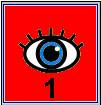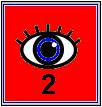Home
About us
News
Services
Guide Dogs
Vision Loss Resources
Discovery Centre
Conferences & Courses
Shop
Support Us
Contact Us
Assistive Technologies
Seeing
Seeing
 In this unit we take a look at the technology that is available to assist Blind and Vision impaired people in their everyday lives. We will be looking particularly at computer technology and some exciting possibilities for the future.
In this unit we take a look at the technology that is available to assist Blind and Vision impaired people in their everyday lives. We will be looking particularly at computer technology and some exciting possibilities for the future.
You are probably wondering how
a blind or vision impaired person might use a computer given that you need to be able to see the screen to operate one.
Not all vision impaired people are “totally” blind and many can make use of a computer with a little help.
For example larger text fonts and high contrast settings can make the text visible to someone with poor vision.
Click on “Eye Con 1” and follow the web link to a cool magnifying feature.
Hearing
 Did you know that computers can speak and read?? Click on “Eye Con 2” and see how well your computer can read. You can type quite a bit into the speech box and have some fun. Try moving your mouse around the character and see how she responds.
Did you know that computers can speak and read?? Click on “Eye Con 2” and see how well your computer can read. You can type quite a bit into the speech box and have some fun. Try moving your mouse around the character and see how she responds.
Voice features can be used by people who are totally blind and believe it or not “blind” people do use computers. Brainstorm with your class a minute to consider what uses a blind person might have for a computer. Here is one to get you started …typing braille to normal text so that sighted people can read what they have to say…
A Whole Lot More

 Surprisingly, there are a lot of computer features to help the disabled use a computer. Click on “Eye Con 3” and follow the link, from the list of access features select the technologies that would be helpful if you were blind or vision impaired.
Surprisingly, there are a lot of computer features to help the disabled use a computer. Click on “Eye Con 3” and follow the link, from the list of access features select the technologies that would be helpful if you were blind or vision impaired.
![]() Click on the arrow and follow the link to the worksheet where you can write your answers. Assistive Technology Worksheet
Click on the arrow and follow the link to the worksheet where you can write your answers. Assistive Technology Worksheet
The Future

Future Technology developments aim at making some causes of blindness a thing of the past. Researches have been working on “bionic” devises which will restore a level of vision to people with some types of blindness. Click on “Eye Con 4” follow the link and read the BBC report on the current progress of this exciting work.
 To watch the video, select the “Watch” option to the right of the diagram of the bionic eye. When you have watched the video you and your class might like to try answering the following questions.
To watch the video, select the “Watch” option to the right of the diagram of the bionic eye. When you have watched the video you and your class might like to try answering the following questions.
Which part of the eye is the electrode fitted to?
What type of eye damage is the implant most suited for?
How many people will be involved in the latest trials?
How many electrodes are there in the newest electrode?
What hopes do developers have for this technology?



